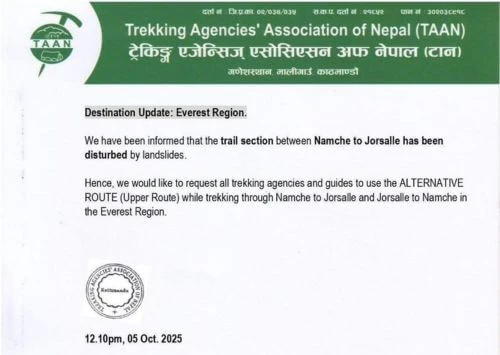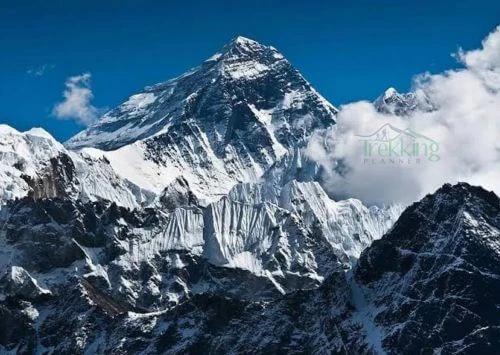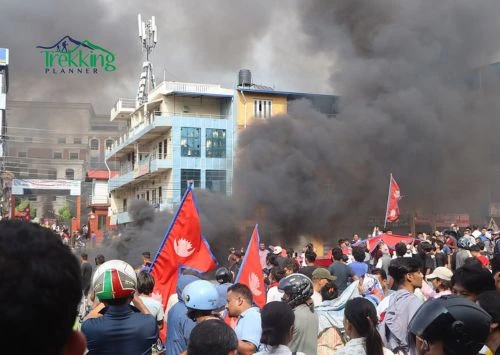Obstacles Faced by Trekkers on the Annapurna Circuit
The Annapurna Circuit Trek has long been known for its challenging yet rewarding nature. However, the introduction of roadways has brought about a series of obstacles that trekkers must now navigate. One of the most significant challenges is the increased traffic on the trekking route. With vehicles now able to access certain sections of the trail, trekkers often find themselves sharing the path with cars, motorcycles, and even buses. This not only diminishes the sense of solitude and tranquility that once characterized the trek but also poses safety concerns for hikers.
Additionally, the construction of roadways has led to the proliferation of teahouses and guesthouses along the route. While this may seem like a positive development, as it provides more options for accommodation and refreshments, it also means that the trekking experience has become more commercialized. Trekkers may find themselves constantly approached by vendors or pressured to stay in certain establishments. This commercialization has eroded the authenticity and simplicity that many trekkers seek when embarking on the Annapurna Circuit.
Moreover, the road construction has resulted in the degradation of some sections of the trekking trail. Heavy machinery and vehicles have caused erosion and damage to the natural environment, making certain parts of the trek less enjoyable or even dangerous. Trekkers must now navigate through muddy or rocky paths, which can be physically demanding and mentally exhausting. The once smooth and well-maintained trails have given way to a more rugged and challenging terrain.
In light of these obstacles, it is crucial for trekkers to be well-prepared and informed before embarking on the Annapurna Circuit. Proper research, physical fitness, and a flexible mindset are essential for navigating the changing landscape and preserving the spirit of this iconic trek.
Changes in Roadways and Their Impact on the Trekking Experience
The Annapurna Circuit Trek has undergone a significant transformation with the introduction of roadways. Previously, trekkers had to rely solely on their own two feet to traverse the rugged terrain and reach their destinations. However, the availability of roads has changed the dynamic of the trekking experience.
One of the most noticeable changes is the increased accessibility for a wider range of individuals. The construction of roads has made the trek more feasible for those with limited time or physical capabilities. It has opened up the possibility for shorter treks or for trekkers to focus on specific sections of the circuit. This newfound accessibility has undoubtedly attracted a larger number of tourists, contributing to the growth of the local tourism industry.
On the flip side, the increased accessibility has resulted in overcrowding on certain sections of the trek. The once secluded and peaceful areas have now become bustling with tourists, vehicles, and commercial establishments. Trekkers may find it challenging to find solitude or have the opportunity to fully immerse themselves in the natural surroundings. The sense of adventure and exploration that was once synonymous with the Annapurna Circuit has been diluted.
Furthermore, the road construction has impacted the traditional rhythm and pace of the trek. Trekkers can now choose to travel by vehicle for certain stretches of the route, bypassing the need to walk. While this may be convenient for some, it detracts from the sense of accomplishment and the connection with nature that walking the entire circuit provides. The journey becomes more fragmented, and the experience of fully immersing oneself in the breathtaking landscapes is compromised.
As roadways continue to expand and reshape the Annapurna Circuit, it is essential to strike a balance between accessibility and preserving the unique trekking experience. The next section will delve into the advantages and disadvantages of road construction on the Annapurna Circuit, shedding light on the ongoing debate surrounding this transformation.
Advantages and Disadvantages of Road Construction on the Annapurna Circuit
The introduction of road construction on the Annapurna Circuit has brought about both advantages and disadvantages, shaping the experience of trekkers and local communities alike. Understanding these pros and cons is crucial in evaluating the impact of roadways on this iconic trek.
One of the primary advantages of road construction is the increased accessibility it offers. The availability of roads means that more people can now experience the beauty of the Annapurna Circuit, regardless of their physical abilities or time constraints. This inclusivity has made the trek more accessible to a wider range of individuals, democratizing the once-exclusive adventure. It has also provided economic opportunities for local communities, with the growth of tourism and the need for services along the route.
However, this accessibility comes at a cost. The influx of tourists and the commercialization of the trek have strained the delicate balance between preservation and exploitation. The once serene and untouched landscapes are now marred by the presence of vehicles, teahouses, and other infrastructure. The authenticity and cultural heritage that drew trekkers to the Annapurna Circuit are gradually being eroded.
The road construction has also raised safety concerns for both trekkers and local communities. With vehicles sharing the trail, the risk of accidents and injuries has increased. Trekkers must now be more cautious and vigilant, navigating through traffic and staying alert to potential dangers. The once peaceful and meditative journey has become punctuated by the noise and chaos of vehicles.
Furthermore, the environmental impact of road construction cannot be overlooked. The heavy machinery and vehicles involved in the construction process have caused significant damage to the natural environment. Erosion, deforestation, and pollution are just some of the consequences of this development. The delicate ecosystems and biodiversity of the Annapurna region are under threat, necessitating urgent measures to mitigate the environmental damage.
In conclusion, while road construction on the Annapurna Circuit has brought about advantages such as increased accessibility and economic opportunities, it has also come with several disadvantages. The next section will explore the safety concerns and precautions that trekkers should consider when navigating the new roadways.
Recommended Read: Reasons why Annapurna Circuit is the Ultimate Trek
Safety Concerns and Precautions for Trekkers on the New Roadways
The introduction of roadways on the Annapurna Circuit has undoubtedly changed the dynamics of the trekking experience, posing new safety concerns for trekkers. It is crucial for individuals embarking on this adventure to be aware of these risks and take appropriate precautions to ensure their safety.
One of the primary safety concerns is the increased traffic on the trekking trail. Trekkers must now share the path with vehicles, making it essential to remain vigilant and aware of their surroundings. It is advisable to walk against the traffic to have a clear view of approaching vehicles and to stay as close to the edge of the road as possible. Additionally, wearing bright-colored clothing and using reflective gear can enhance visibility and reduce the risk of accidents.
Weather conditions can also impact the safety of trekkers on the roadways. Rainfall can make the paths muddy and slippery, increasing the chances of slips and falls. It is crucial to check weather forecasts before embarking on the trek and to be prepared with appropriate footwear and gear. Trekkers should also exercise caution when crossing streams or rivers that may become swollen due to heavy rainfall.
Moreover, trekkers should be mindful of their physical fitness and capabilities when navigating the new roadways. The rugged terrain and steep inclines can be challenging, especially for those who are not accustomed to hiking or have limited experience. It is advisable to undergo physical training and prepare adequately before embarking on the Annapurna Circuit. Taking breaks, staying hydrated, and listening to one's body are essential practices to ensure a safe and enjoyable trekking experience.
Lastly, it is crucial to respect the local culture and customs when trekking on the new roadways. Many sections of the route pass through villages and communities, and it is important to be mindful of the local way of life. Trekkers should seek permission before entering private property, avoid littering, and be respectful of local traditions. By fostering a positive and harmonious relationship with the local communities, trekkers can contribute to the sustainable development of the Annapurna region.
In the face of these safety concerns, trekkers must remain cautious and prioritize their well-being. By taking appropriate precautions and being mindful of the risks, they can navigate the new roadways and continue to enjoy the beauty of the Annapurna Circuit.
Alternative Routes and Options for Trekkers Who Want to Avoid the Roadways
For trekkers who seek a more authentic and secluded experience on the Annapurna Circuit, there are alternative routes and options available to avoid the roadways. These routes provide an opportunity to reconnect with nature, immerse oneself in the local culture, and preserve the essence of the trekking adventure.
One such alternative route is the Annapurna Base Camp trek. This route takes trekkers on a journey to the base of the majestic Annapurna Mountain range, offering unparalleled views and a chance to witness the grandeur of the Himalayas up close. The Annapurna Base Camp trek is less affected by road construction and provides a more remote and pristine experience compared to the traditional circuit.
The Upper Mustang trek is another option for trekkers looking to avoid the roadways. Located in the rain shadow of the Annapurna and Dhaulagiri ranges, this trek offers a unique and culturally rich experience. The Upper Mustang region is known for its ancient Buddhist monasteries, traditional villages, and stunning landscapes. By venturing into this lesser-known region, trekkers can escape the crowds and explore a hidden gem of Nepal.
For those who still wish to experience the Annapurna Circuit but want to minimize their exposure to roadways, there are sections of the trek that remain relatively unaffected by road construction. The Manang region, for example, still retains its natural beauty and tranquility, providing trekkers with a glimpse of the untouched landscapes that once characterized the entire circuit. By carefully planning their itinerary and selecting specific sections of the route, trekkers can tailor their experience to align with their preferences.
It is important to note that these alternative routes may present their own challenges and require additional preparation. Trekkers should research and seek guidance from experienced guides or local authorities to ensure they are well-equipped and informed before embarking on these journeys. By exploring these alternative options, trekkers can find solace and authenticity amidst the changing landscape of the Annapurna Circuit.
How Roadways Have Affected Local Communities and Businesses
The introduction of roadways on the Annapurna Circuit has not only impacted trekkers but has also brought about significant changes for the local communities and businesses along the route. The socio-economic landscape of these communities has been transformed, presenting both opportunities and challenges.
On one hand, the increased accessibility has provided economic opportunities for local communities. The growth of tourism along the circuit has led to the establishment of teahouses, guesthouses, and other businesses catering to the needs of trekkers. This influx of tourists has created employment opportunities and boosted the local economy. Many local residents have found work as guides, porters, or in the hospitality industry, providing them with a source of income and improving their quality of life.
Additionally, the availability of roads has facilitated the transportation of goods and supplies to these communities. Previously, villagers had to rely on arduous treks or mule caravans to transport essential items. With the introduction of roadways, the transportation process has become more efficient and less labor-intensive, ensuring a steady supply of goods and provisions for the local communities.
However, the road construction has also brought about challenges for these communities. The once self-sufficient villages now depend heavily on tourism as their primary source of income. This overreliance on tourism leaves them vulnerable to fluctuations in visitor numbers and seasonal variations. The commercialization of the trek has also led to increased competition among businesses, with some struggling to attract customers amidst the abundance of options.
Furthermore, the environmental impact of road construction has affected the livelihoods of local communities who rely on agriculture and traditional practices. Deforestation, soil erosion, and water pollution have posed threats to farming activities and the delicate balance of the ecosystem. The changing landscape has also altered the migratory patterns of wildlife, impacting the traditional hunting and gathering practices of some indigenous communities.
It is essential to address these challenges and ensure the sustainable development of the local communities along the Annapurna Circuit. The next section will delve into the environmental impact of road construction and the potential solutions for managing roadways on the trek.
Environmental Impact of Road Construction on the Annapurna Circuit
The environmental impact of road construction on the Annapurna Circuit cannot be understated. The once pristine and untouched landscapes have been significantly altered, posing threats to the delicate ecosystems and biodiversity of the region. It is crucial to understand and address these environmental concerns to ensure the long-term sustainability of the trek and the preservation of the natural beauty that draws trekkers to the Annapurna Circuit.
One of the most immediate consequences of road construction is deforestation. The need to clear land for roadways and infrastructure has resulted in the loss of large areas of forest cover. The destruction of forests not only diminishes the aesthetic appeal of the trek but also has far-reaching ecological implications. Forests play a crucial role in regulating climate, maintaining water resources, and providing habitats for diverse species. The loss of forests disrupts these delicate ecosystems and threatens Annapurna's biodiversity.
Explore Annapurna Region Trekking Packages





